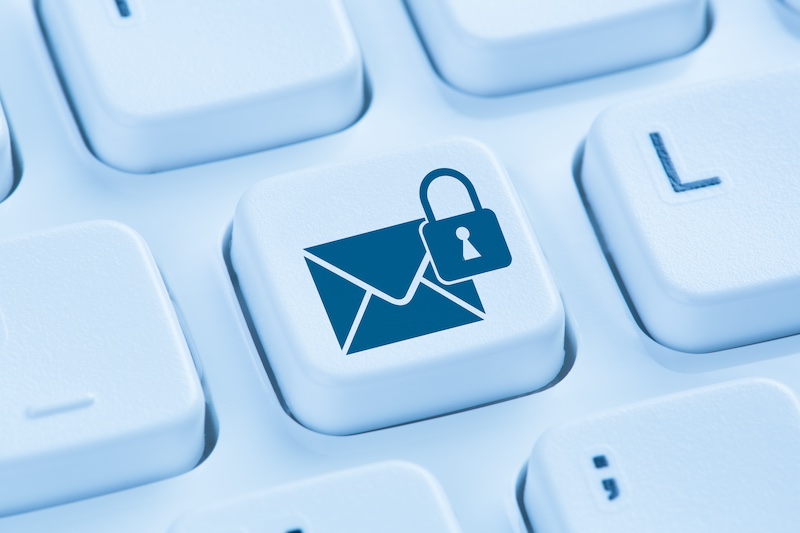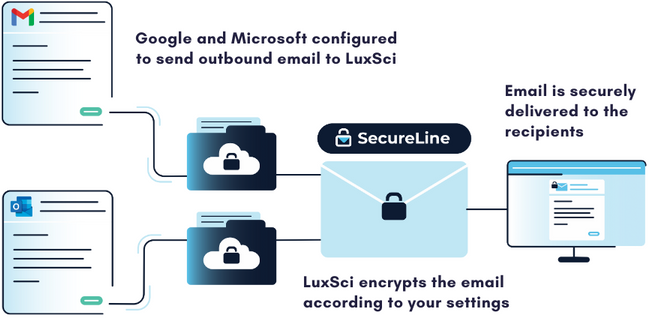Today’s healthcare organizations heavily rely on a variety of third-party organizations for a range of services and products. This includes applications (i.e., SaaS solutions), suppliers, partners, and other companies depended upon to serve their patients and customers.
As the healthcare industry evolves, companies will need to increasingly collaborate with external parties, or business associates, which creates several dependencies and risks.
In particular, third-party email platforms are integral to the operations of healthcare companies, and the sensitive nature of protected health information (PHI) contained in email communications raises the stakes exponentially.
This post analyzes the main risks associated with third-party email integrations. From there, we detail the most effective measures for safeguarding your company from the dangers of an insecure integration with an email delivery platform.
What Are The Risks of Third-Party Email Integrations?
Email applications are a pillar of the modern workplace, enabling companies to communicate almost instantly and facilitating greater productivity and efficiency. Email has transformed the speed at which transactions can take place and individuals receive the product or service they’ve purchased.
Consequently, the importance of email communication and the vast amounts of sensitive data it encompasses, makes it a contrast target – or “attack vector” for cybercriminals. Hackers and other malicious actors know that if they can infiltrate an organization’s email system, they have the potential to steal vast amounts of private or proprietary data. Just as alarmingly, they may simply use an insecure email platform as a backdoor into a company’s wider network, assuming greater control over their systems in an effort to maximize their financial gain or inflict maximum damage to an organization.
For healthcare companies with ambitious patient engagement goals, sharing protected health information (PHI) with a reliable third-party email provider is mandatory. Unfortunately, this comes with a litany of risks, which include:
- Data Breaches: weak security features in third-party email providers can expose PHI.
- Misconfigured Permissions: misconfigurations and a lack of oversight control can result in personnel at third parties having excessive access to PHI.
- HIPAA Non-Compliance – if the integration does not support encryption, audit logs and other features mandated by HIPAA, you may drift into non-compliant territory.
- Financial Implications: violating HIPAA regulations can result in financial penalties, including fines and compensation to affected parties.
- Reputational Damage: companies that fall victim to cyber attacks, especially through negligence, become cautionary tales and case studies for cybersecurity solution vendors. Data exposure that comes from an insecure email platform integration can have disastrous effects on your company’s reputation.
Therefore, mitigating the risks of integrating a third-party email platform into your IT infrastructure, platforms and systems is crucial. This includes customer data platforms (CDP), electronic health record systems (EHR) and revenue cycle management platforms (RCM). Let’s move on to specific strategies on how to do so and, subsequently, better safeguard your organization’s PHI.
How To Mitigate Email Integration Risk
Now that you have a better understanding of the potential risks that come with integrating an insecure third-party email solution into your IT ecosystem, let’s look at risk prevention. Fortunately, several strategies will significantly lower the risk of malicious actors getting their hands on the sensitive patient data under your care. Let’s take a look:
Verify A Third-Party Vendor’s Security Practices
Before sharing PHI with a vendor, ensure they have a strong cybersecurity posture. This makes sure they have measures such as encryption, access control (or identity access management (IAM), and continuous monitoring solutions in place, in addition to conducting regular risk assessments.
Similarly, it’s crucial to research an email provider’s reputation, including how long they’ve been in operation, the companies they count among their clients, and their overall standing within the industry.
Business Associate Agreements (BAAs)
A business associate agreement (BAA) is a legal document that’s required for HIPAA compliance, when sharing PHI with third-party vendors, such as email services. It ensures that both you and the vendor formally agree to comply with HIPAA regulations and your respective responsibilities in protecting patient data.
Without a BAA, the above point about verifying a vendor’s security practices is moot. If they’re not willing to sign a BAA, their security stance is irrelevant, as your organization would have violated HIPAA regulations by not signing a BAA. More to the point, a HIPAA compliant email vendor will be eager to highlight their willingness to sign a BAA, as it advertises their ability to safeguard PHI and aid companies in achieving compliance.
Encrypting PHI
Encryption needs to be a major consideration when it comes to integrating a third-party email services provider. Adequate encryption measures ensure that sensitive data is protected even in the event of its exfiltration or interception. Sure, the hackers now have hold of the PHI, but with proper encryption policies and controls, it will be unreadable, preserving the privacy of the individuals affected by the data leak.
With this in mind, encryption measures that mitigate third-party email integrations include automated encryption, which ensures PHI is always encrypted without the need for manual configuration, and flexible encryption, which matches the encryption level with the security standards of your recipients.
Threat Intelligence
Unfortunately, cybersecurity never stands still. With the ever-evolving nature of cyber threats, healthcare organizations must keep up with the latest dangers to patient data. This means creating a process for discovering, and acting upon, the latest threat intelligence.
This could entail signing up for a threat intelligence service, or retaining the periodic services of an external threat intelligence expert.
Developing An Incident Response Plan For Vendor-Related Breaches
The alarming reality of securing PHI is that, even with robust safeguards in place, such as continuous monitoring, a process for acquiring the latest threat intelligence, and generally following the advice outlined in this post, data breaches are still a stark reality. Cyber criminals will always target healthcare organizations, due to the value and sensitivity of their data and systems. Worse, even as security measures grow more effective, the tools that malicious actors have at their disposal become more sophisticated. It’s an arms race, and one that’s only been exacerbated by the introduction of AI, with both security professionals and cyber criminals honing their use of it for their respective purposes.
Taking all this into consideration, having a comprehensive incident response plan in place ensures your organization responds quickly and effectively to cyber threats, or even suspicious activity. Your incident response plan should:
- Detail what employees should do if they suspect malicious activity.
- Outline steps for investigation and containment.
- When and how to notify affected parties.
- Processes for disaster recovery and retaining operational continuity.
While it’s vital to develop a general incident response plan, having a specific set of protocols for security breaches caused by third-party vendors is especially prudent.
Choose a HIPAA-Compliant Email Provider
An efficient and convenient way of mitigating the risks of third-party email integrations is to deploy a HIPAA compliant email delivery platform for communicating with patients and customers.
Being well-versed with the safety requirements of healthcare organizations, HIPAA compliant email software features all the security required to safeguard PHI. In deploying a HIPAA compliant email provider, you also implement several of the strategies outlined above, such as encryption and signing a BAA (as a HIPAA compliant will offer a BAA). Accounting for this, taking the time to select the right HIPAA compliant email provider for your organization’s needs and goals should be a key part of your overall cyber threat defense strategy.
Train Staff on Secure Email Communication Practices
Your staff is a considerable part of securing third-party email communications, so they must know the best practices for email security and safeguarding PHI. Comprehensive cyber threat awareness training ensures your personnel understand the risks of HIPAA non-compliance and follow the procedures you’ve set in place. Furthermore, the more responsibility an employee has in regards to PHI, the more comprehensive and regular their training needs to be.
Additionally, training, or “drilling”, if you will, on their roles in the incident response process increases its efficacy considerably and optimizes your response to attempts at unauthorized access to data.
How LuxSci Mitigates the Risks of Third-Party Integrations
At LuxSci, we specialize in providing secure, HIPAA compliant solutions that enable healthcare organizations to execute effective email communications and marketing campaigns.
With more than 20 years of experience, and helping close to 2000 healthcare organizations with HIPAA compliant email services, LuxSci has developed powerful, proven tools that sidestep the vulnerabilities often associated with third-party email integration. To learn more about how LuxSci can help your organization address the risks of third-party email integration, contact us today.










